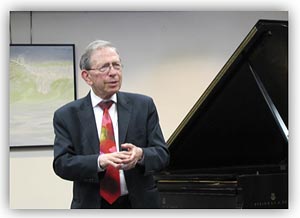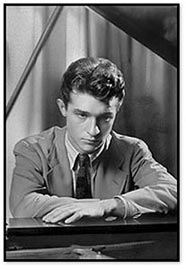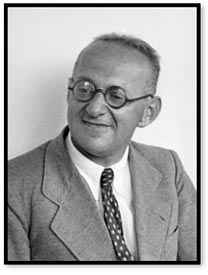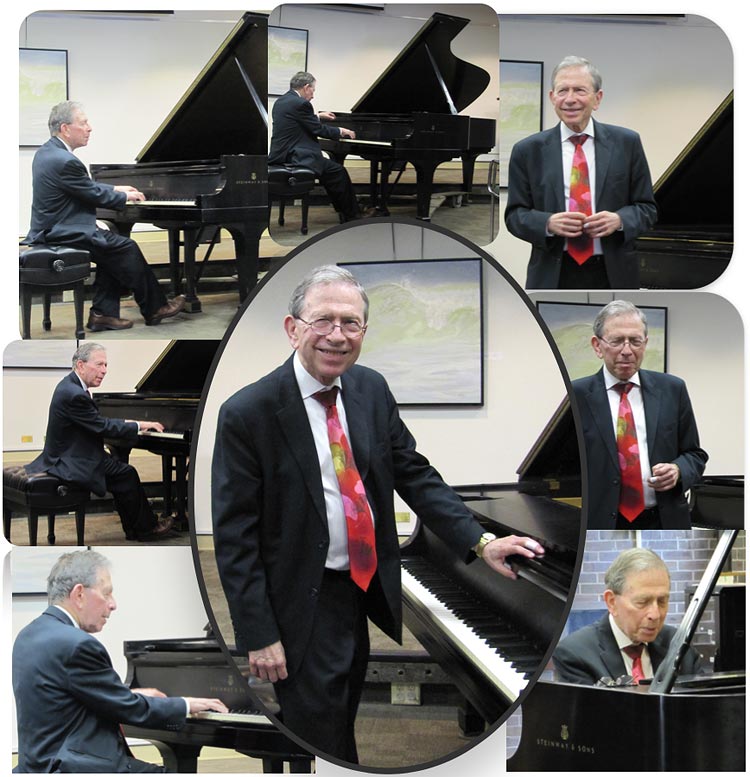Music Educators Association of New Jersey
Serving teachers and students since 1927



Isabelle Vengerova, Olga Samaroff, William Kapell, Eduard Steuermann, and Alfred Cortot were the subjects of this fascinating talk by Jerome Lowenthal, concert pianist, concerto soloist, chamber music artist, and longtime Juilliard School faculty member. His account was filled with rich commentary, beautiful playing, and amusing anecdotes. Click here for more background information.

As a child, our speaker attended the Settlement Music School in Philadelphia in the late 1930s. European musicians were fleeing to the States then, and the school faculty became quite fluid; Jerome was repeatedly reassigned teachers. Six months of piano lessons with the wife of composer Leo Ornstein were followed by lessons with Eleanor Blum, assistant of David Saperton, her supervisor. (Ms Blum is now Eleanor Sokoloff, 100 years old still teaching at Curtis.) Jerome also studied briefly with a daughter of Otto Ortmann.

Then the renowned arts patron Frederic R. Mann brought 14-year-old Jerome to the reputedly terrifying Mme. Isabelle Vengerova. Using the Vengerova system, her assistant would prepare students for lessons with Madame. They practiced scales by dropping the wrist for each key while feeling the 'natural' weight of the hand. After mastering that, the student would play two, then three, and finally four keys for each dip of the wrist. But that presented a new challenge: to avoid accenting. The method was not universally applicable. "The system was flawed, but [still] has value, - that of learning to produce sound with the drop of the wrist," Mr. Lowenthal stated.

Jerome's routine of studying mostly with Mme. Vengerova's assistant ended when Mr. Mann arranged for him to work with Olga Samaroff. Although it was only for a few months just before her death in 1948, her influence "was life changing," Mr. Lowenthal reflected. Mme. Samaroff used no system, but was governed by principles. Uppermost was the acceptance of great responsibility in "bringing great masters to sound." One must maintain integrity in following the score, she believed. It's not always simple. Rudolf Serkin and Olga Samaroff, travelling by rail from Curtis in Philadelphia to Manhattan, spent the entire trip debating the length of the opening note (without a staccato) of Beethoven's Sonata Op. 2, No. 1!
Mme. Samaroff sought nuances in interpretation and employed imagery to help students discover deeper meaning in their pieces. Jerome Lowenthal demonstrated with the Adagio from Beethoven Piano Sonata Op. 10, No.3. Samaroff was not rigid. Speaking of a slow tempo chosen by "my student, Rosalyn Tureck," she was more concerned with the overall approach rather than specific details. "There is more than one interpretation," she stressed. "Think of the life of the composer. To be an artist . . . develop understanding of the music." These were impressive concepts.

The next three years, Jerome studied with William Kapell, a former student of Samaroff. An extraordinary pianist, Kapell frequently demonstrated during lessons. Influenced by an emphasis on scales placed by Jascha Heifitz, he focused on fingers, first training them to bear weight and building on that. Kapell favored high fingers rather than economy of motion. "I studied Czerny exercises and practiced with a matchbox on my hand, thinking evenness is for typewriters, not for interpretation. I would argue with my teacher," Mr. Lowenthal revealed. But Kapell could reverse himself, for example, changing his own interpretation of the Chopin B Flat minor sonata, Op. 35. "Kapell was an authority figure, but I adored him," said Mr. Lowenthal.

Following Kapell's untimely death, Jerome studied at Juilliard with the teacher who influenced him above all others, Eduard Steuermann, pianist and composer. On the recommendation of his own teacher Ferruccio Busoni, Steuermann studied with Arnold Schoenberg and became associated with the Second Viennese School. Steuermann thought of himself as a Chopin expert, but he was also very grounded in the classics. He'd proclaim, 'Search for one's self,' but being an authoritarian teacher, he really meant his self," opined Mr. Lowenthal.
For sustained tone, Steuermann would suggest remaining on a played key and "vibrating the hand." While not affecting the sound, this encourages the pianist to think about transferring weight finger to finger, while the rest of the hand remains "loose" or relaxed.
Regarding inculcating a student's respect for a composer's intent, Mr. Lowenthal recalled a lesson on the Alban Berg sonata. Steuermann told him, "This is the first thing I played for Berg. Before I began, Berg cautioned, "I hope you don't pay attention to all the things I wrote on the score.' You can go crazy trying to observe every marking!"
Steuermann emphasized that the style of score markings varies from composer to composer; one must try to infer each composer's intent. For example, in Chopin, a diminuendo is usually accompanied with a ritardando. In Beethoven Sonata Op. 109, you will find the instruction a tempo following an espressivo, suggesting that the espressivo is accompanied by a ritardando. Steuermann was "always interesting; he was wonderful," Mr. Lowenthal recalled.

Finally, Mr. Lowenthal reflected on his studies with Alfred Cortot. Despite his arthritis, Cortot would occasionally demonstrate at lessons. His Beethoven "Hammerklavier" (Op. 106) was taken at the slower tempo Cortot himself preferred. Working with Cortot was so different from Mr. Lowenthal's previous experiences that at the time, he did not recognize Cortot's great influence. He later realized that studying with Cortot also had left an indelible impression.

In concluding, Jerome Lowenthal stated that he is not an authoritarian teacher. The captivated audience wanted to hear more. Encore!
Photos and layout, Nancy Modell
Bertha Mandel, writer